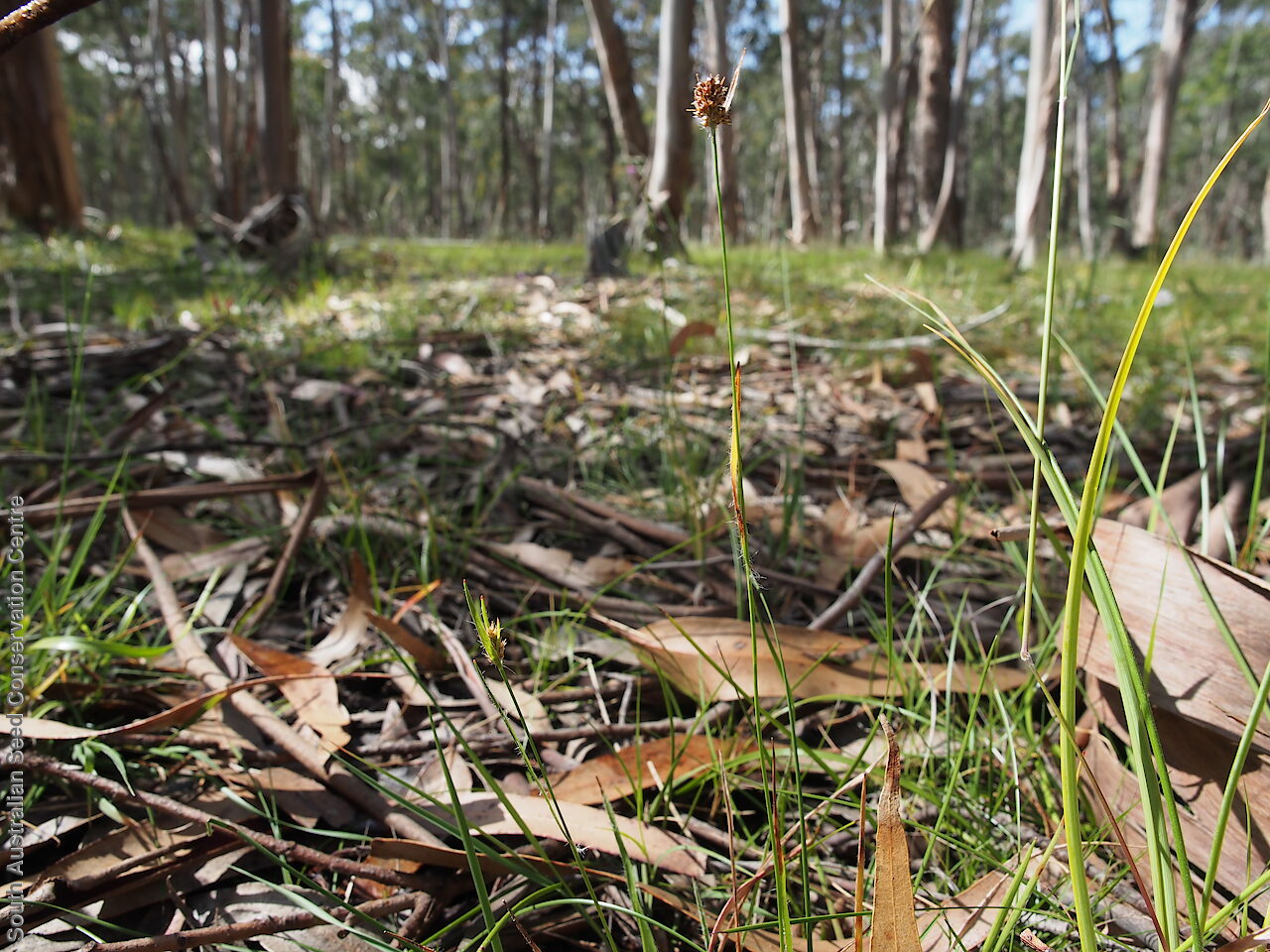
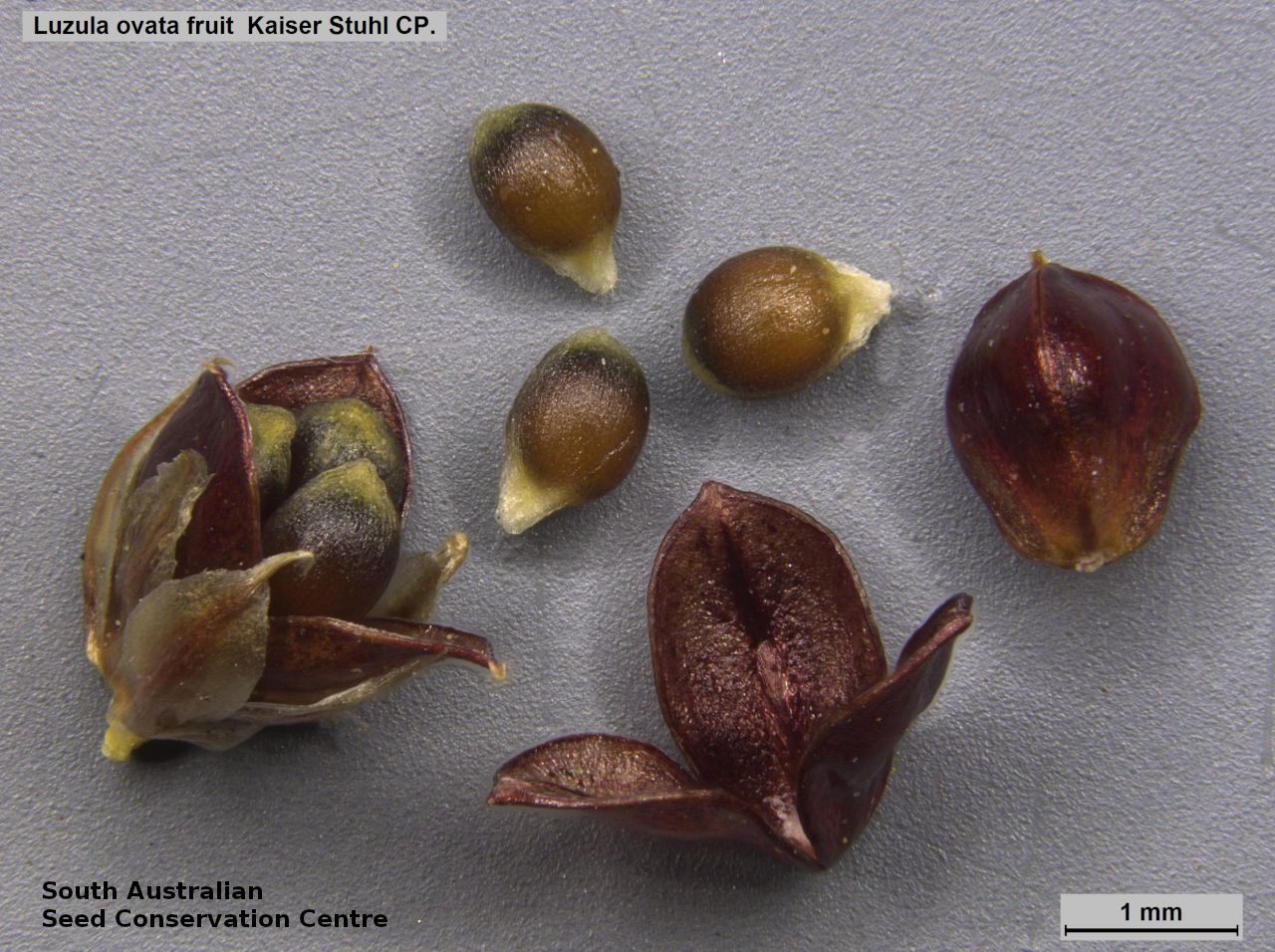
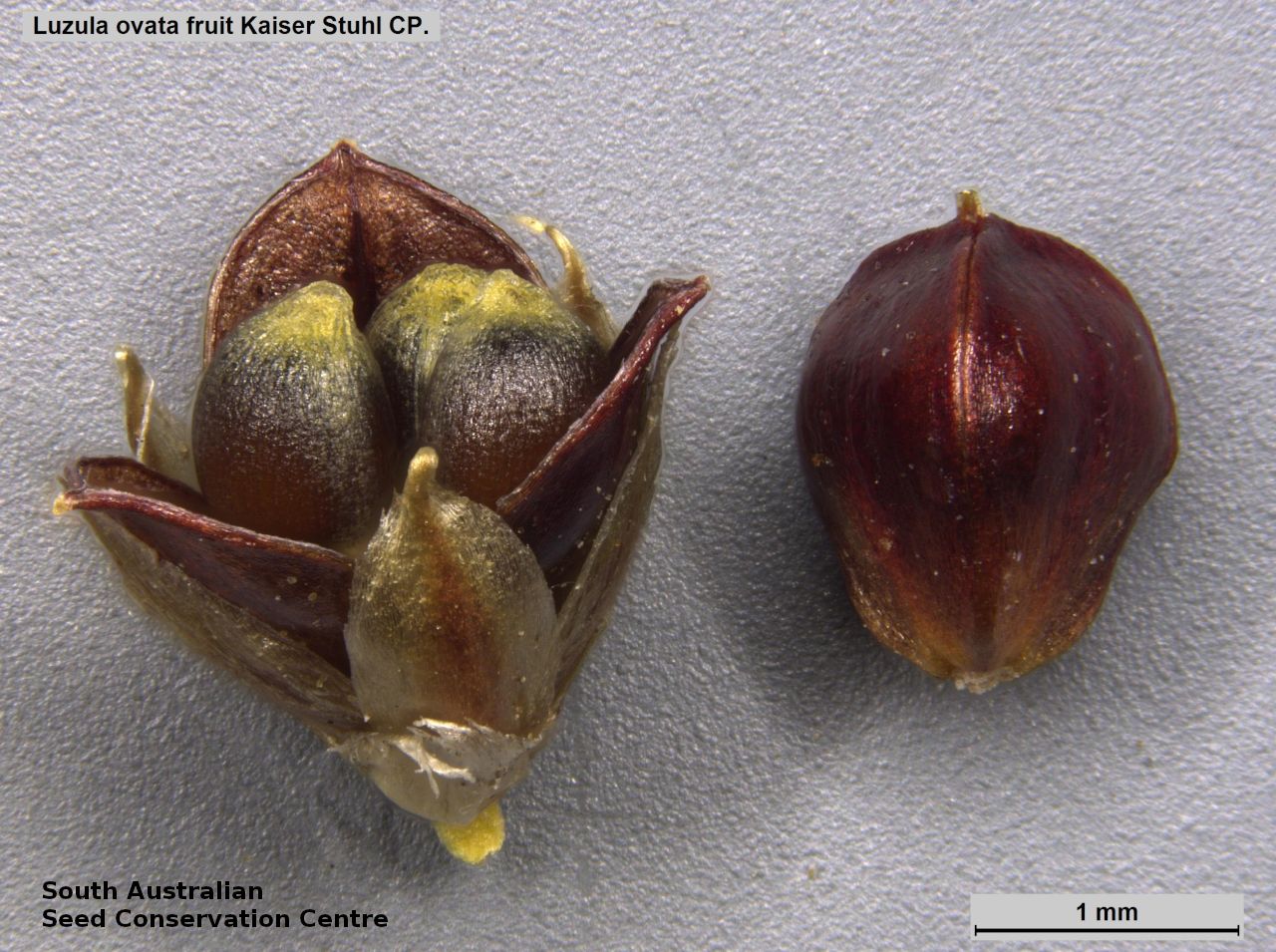
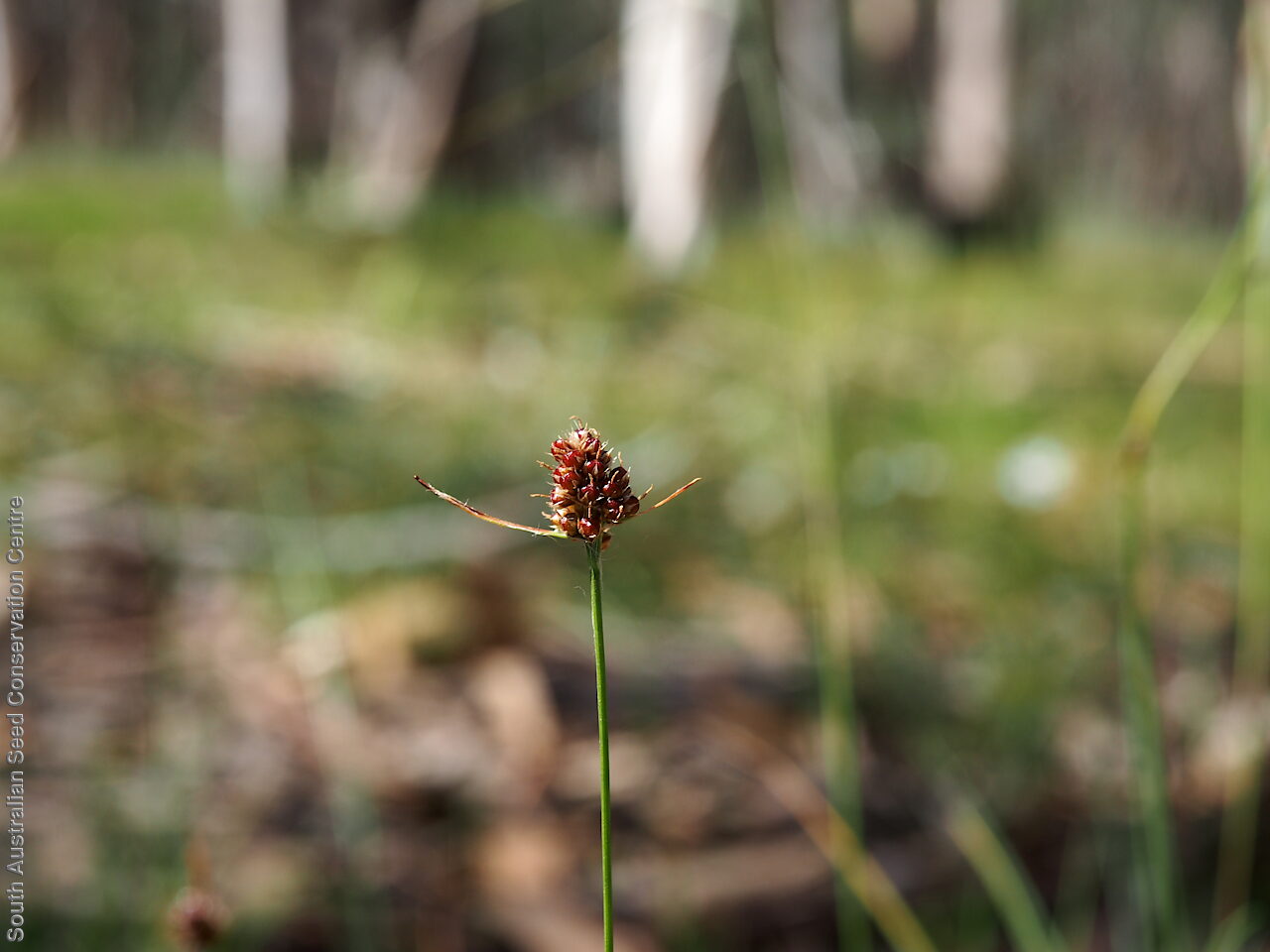
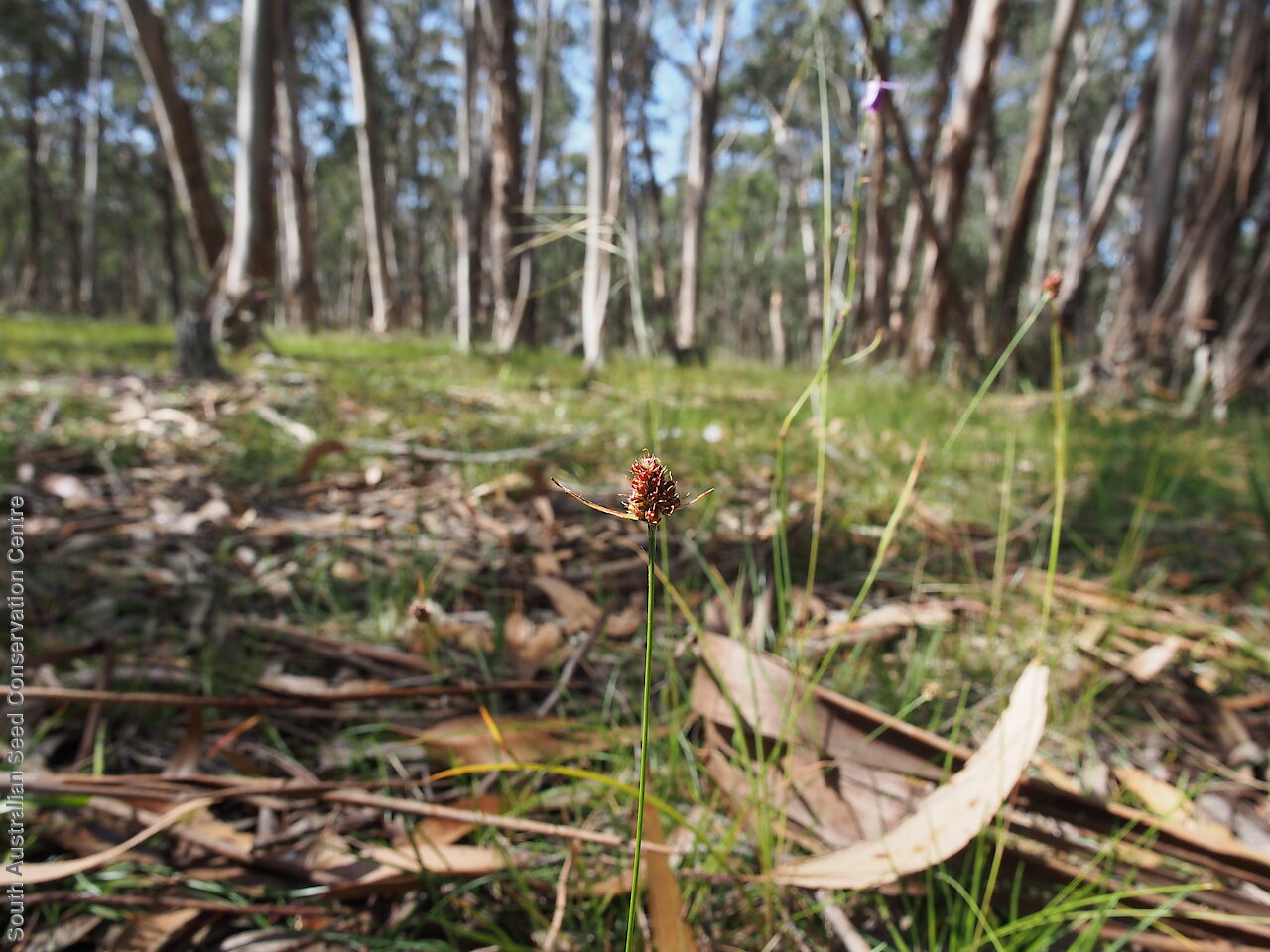
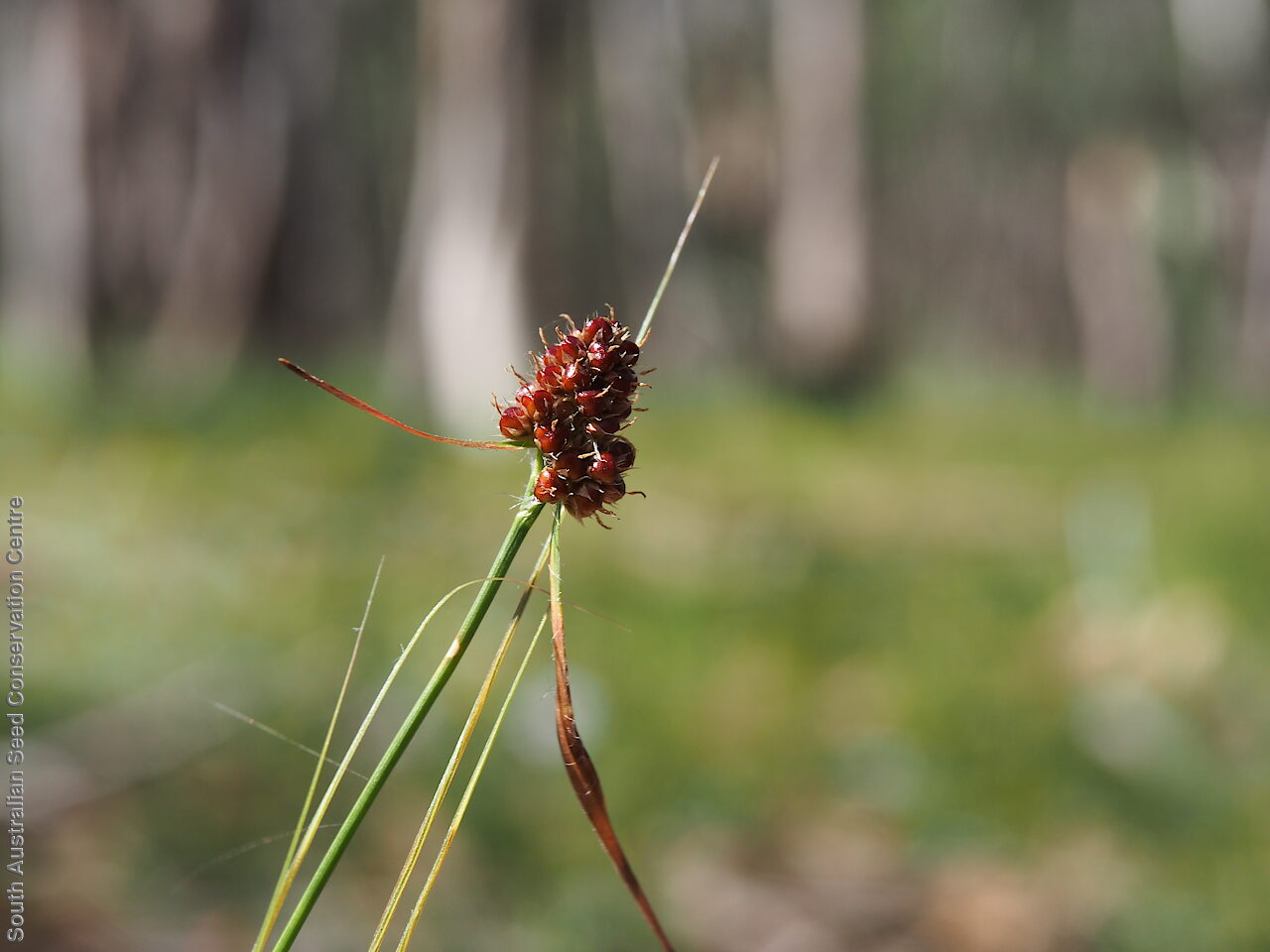
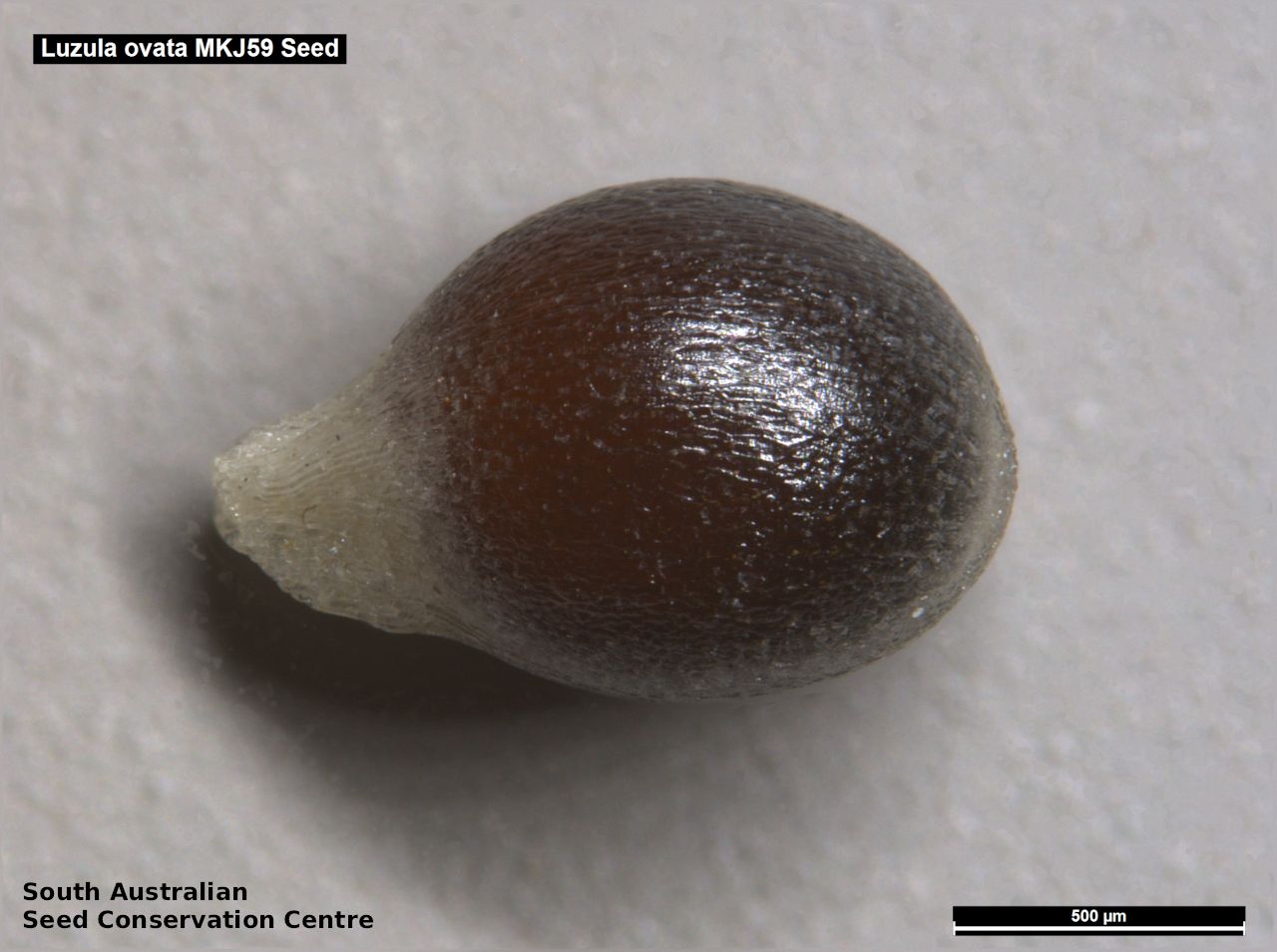
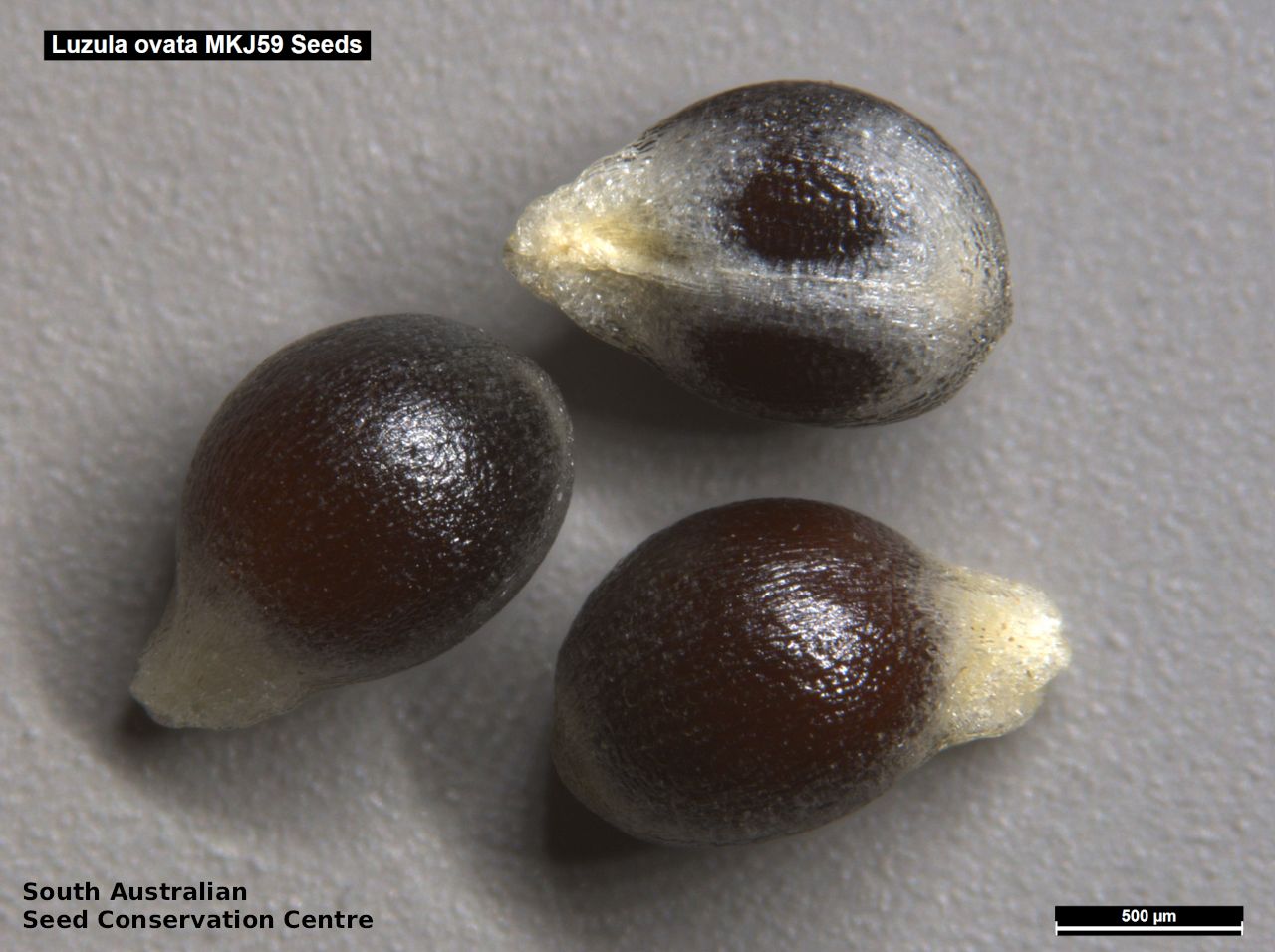
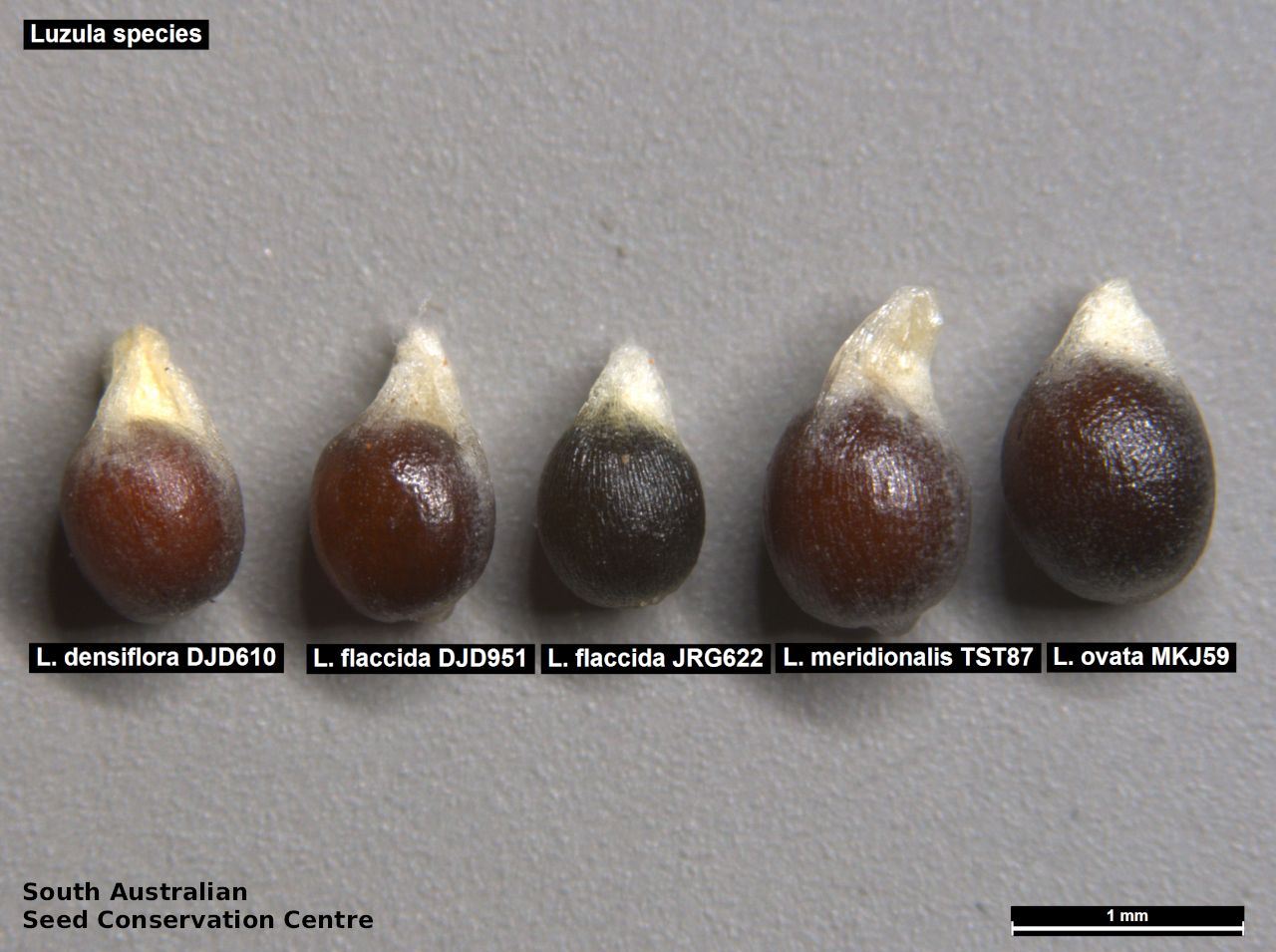


Botanical art
Prior names
Luzula campestris, partly
Luzula australasica
Common names
Oval Wood-rush
Clustered Wood-rush
Etymology
Luzula, possibly from the Italian 'luzziola', meaning sparkle or a fire-fly, or from the Latin 'luxulae, 'meaning light, probably alluding to the sparkling and quivering character of the heads when wet with dew. Ovata, from the Latin 'ovatus', meaning ovate, referring to its single ovate heads.
Distribution and status
Found in the Mount Lofty Ranges and the lower South-east in South Australia, growing in swampy areas. Also found in New South Wales and possible Victoria (which treated this species as reduced forms of Luzula densiflora). Native. Rare in South Australia. Common in the other States.
Herbarium regions: North Western, Murray, Southern Lofty, South Eastern, Green Adelaide
NRM regions: Adelaide and Mount Lofty Ranges, Northern and Yorke, South Australian Murray-Darling Basin, South East
AVH map: SA distribution map (external link)
Plant description
Small perennial sedge with slender tufts; slightly bulbous at base with bright green leaves, later becoming reddish. Leaves to 4 mm wide, much shorter than the flowering stems; flaccid, flat, with moderately to densely hairy margins; tips obtuse. Inflorescence a single ovate congested cluster with many dark red-brown flowers at the end of a long erect stalk. Flowering between September and December. Fruits are dense clusters of smooth deep-purple-red capsules. Seeds are black ellipsoid seed to 1.2 mm long and 0.9 mm wide, with a large white fleshy appendage at one end. Seed embryo type is broad.
Seed collection and propagation
Collect seeds between October and January. Collect fruits either by picking off the mature heads, those turning deep red and come-off easily or break-off the whole spikes. Place the heads in a tray and leave to dry for one to two weeks. Then rub the heads with a rubber bung to dislodge the seeds. Use a sieve to separate any unwanted material. Be careful, as the seeds are very small. Seeds are brown and hard. Store the seeds with a desiccant such as dried silica beads or dry rice, in an air tight container in a cool and dry place. From two collections, the seed viability was high, at 100%.
| Location | No. of seeds (weight grams) | Number of plants | Date collected | Collection number Collection location | Date stored | % Viability | Storage temperature |
|---|---|---|---|---|---|---|---|
| BGA MSB | 2,000 (2.07 g) 2,000 (2.07 g) | 20 | 22-Dec-2004 | MKJ59 Southern Lofty | 28-Mar-2006 | 100% | -18°C |
| BGA | 10,000 (3.17 g) | 20 | 31-Oct-2007 | RJB75420 South Eastern | 19-Sep-2008 | 100% | +5°C, -18°C |
| BGA | 800 (0.300 g) | 5 | 11-Nov-2020 | DJD3935 Southern Lofty | 28-Jun-2021 | 100% | -18°C |
| BGA | 1,100 (0.385 g) | 20 | 18-Nov-2021 | DJD4077 Southern Lofty | 7-Jul-2022 | 100% | -18°C |
Number of plants: This is the number of plants from which the seeds were collected.
Collection location: The Herbarium of South Australia's region name.
% Viability: Percentage of filled healthy seeds determined by a cut test or x-ray.